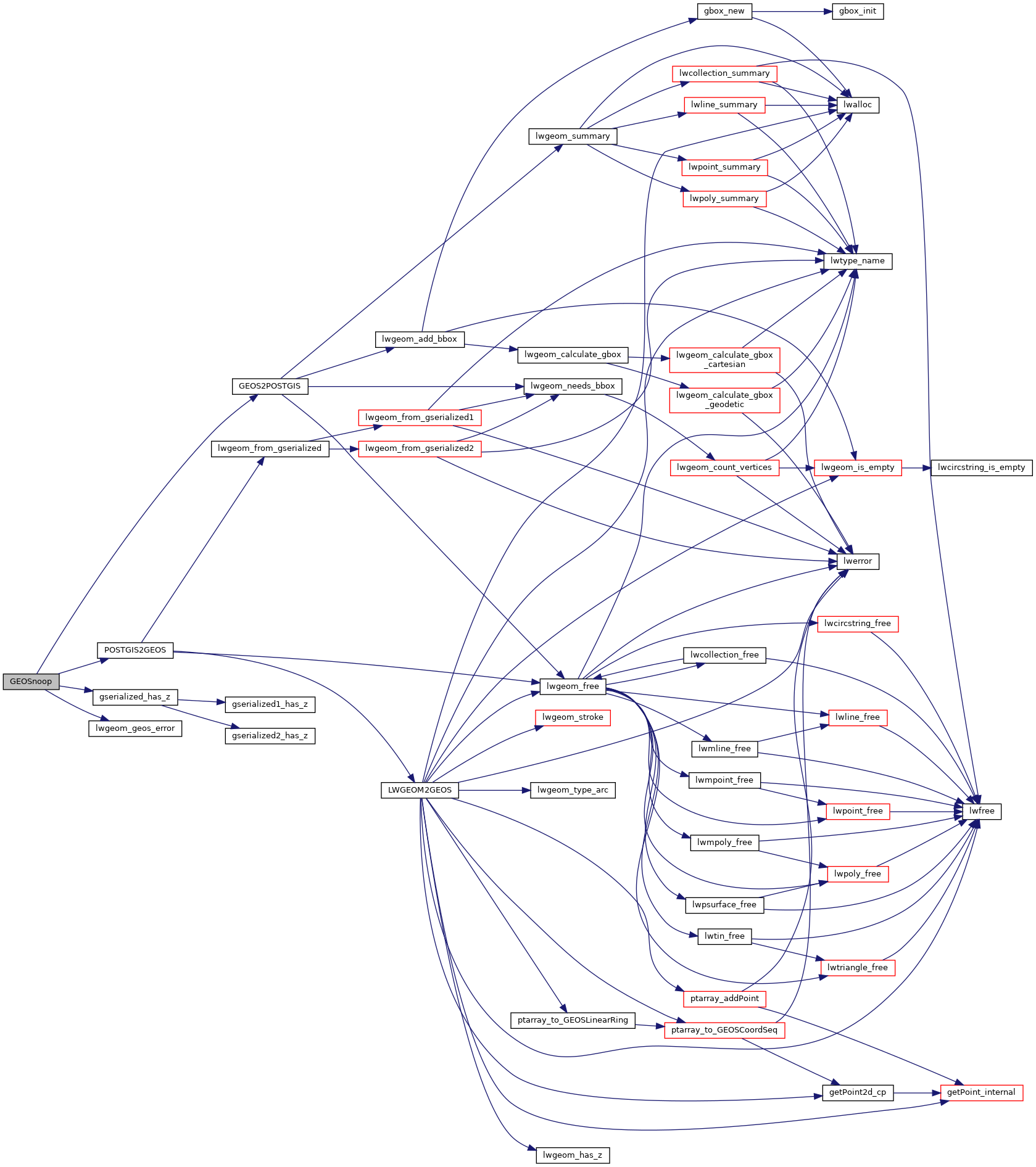Loading...
Searching...
No Matches
◆ GEOSnoop()
| Datum GEOSnoop | ( | PG_FUNCTION_ARGS | ) |
Definition at line 1956 of file postgis/lwgeom_geos.c.
1957{
1958 GSERIALIZED *geom;
1959 GEOSGeometry *geosgeom;
1960 GSERIALIZED *lwgeom_result;
1961
1962 initGEOS(lwpgnotice, lwgeom_geos_error);
1963
1964 geom = PG_GETARG_GSERIALIZED_P(0);
1965 geosgeom = POSTGIS2GEOS(geom);
1966 if ( ! geosgeom ) PG_RETURN_NULL();
1967
1969 GEOSGeom_destroy(geosgeom);
1970
1971 PG_FREE_IF_COPY(geom, 0);
1972
1973 PG_RETURN_POINTER(lwgeom_result);
1974}
int gserialized_has_z(const GSERIALIZED *g)
Check if a GSERIALIZED has a Z ordinate.
Definition gserialized.c:203
GSERIALIZED * GEOS2POSTGIS(GEOSGeom geom, char want3d)
Definition postgis/lwgeom_geos.c:1798
GEOSGeometry * POSTGIS2GEOS(const GSERIALIZED *pglwgeom)
Definition postgis/lwgeom_geos.c:1823
Definition liblwgeom.h:443
References GEOS2POSTGIS(), gserialized_has_z(), lwgeom_geos_error(), and POSTGIS2GEOS().
Here is the call graph for this function:
